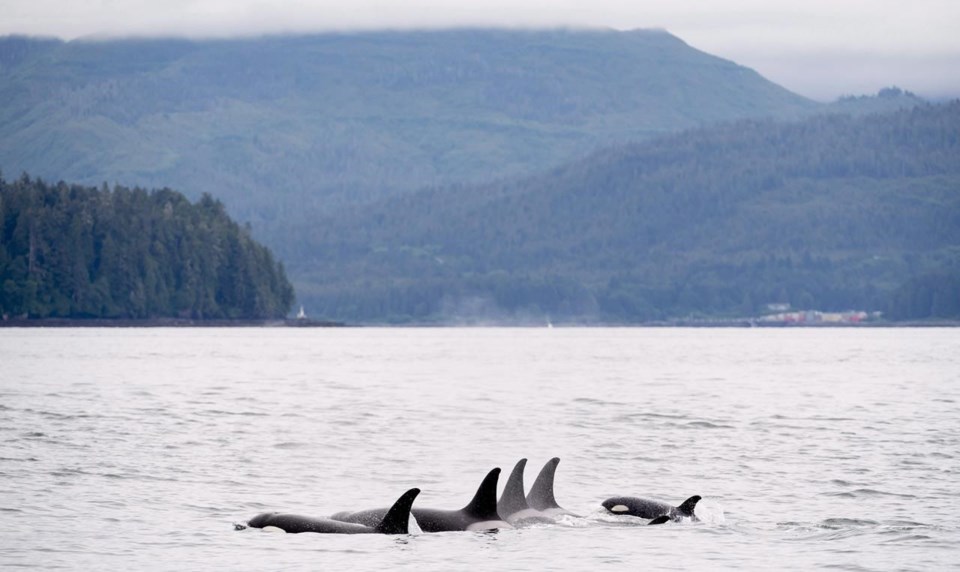VANCOUVER — Researchers say British Columbia's southern resident killer whales are not only threatened by the decline of the overall salmon population but also the reduction in high-quality fatty salmon, the whales' preferred meal.
A study led by University of British Columbia scientists concludes that not all salmon are equal when it comes to nourishing the rare whales, whose total population has dwindled to 73.
“It’s not just food abundance that impacts southern resident killer whales but also food quality,” lead author Jacob Lerner said in an interview.
Understanding the differences in "energy density" of salmon and their populations could help manage both the fish and the whales that feed on them, the researchers say in the study published in Scientific Reports last week.
The study says that while there are several human-related suspects in the decline in whale numbers, such as water contaminants and noise pollution, much of the blame falls on the decline of the Fraser River chinook salmon population.
The study says the most endangered types of Fraser River chinook are also the most energy-rich prey for the whales.
Lerner said the scientists began with the hypothesis that all Fraser River chinook salmon have the same value to southern resident killer whales.
However, they realized that isn’t true, since the fish have different levels of lipid content. Fat spring-run salmon tend to be more lipid-rich, attracting the killer whales that prey on them, while salmon that come later in the season have lower energy density.
“A lot of research looked at the abundance of salmon, but we thought it was important to try to understand how the energy density of chinook salmon differs between the different populations of chinook salmon and when these different populations of chinook salmon are available to killer whales,” said Lerner.
The study found that southern residents would have to consume 30 per cent more fall-run salmon than in the spring, since the early-run fish tend to be fatter and more energy dense.
To maintain the same energy level, the total population of southern residents would have to eat roughly 80,000 more low-lipid chinook salmon every year, than if they were eating high-lipid fish, said Lerner, a doctoral student in pelagic ecosystems at UBC.
Lerner said quantifying the lipid content from the Fraser salmon plays a role in helping killer whales because the migratory animals that always return to the Salish Sea for spring and summer, often coinciding with the arrival of the spring-run salmon.
"We identified a spectrum of high, medium and low-lipid chinook populations from the Fraser that can be used to better inform energetics models and manage both species,” said Lerner in a news release.
Although the study mainly centres on killer whales and their favourite prey, Lerner said it also highlights how climate change has an effect on the entire food web.
Brian Hunt, associate professor at UBC's Institute for the Oceans and Fisheries, said in the news release that they will keep monitoring the Fraser River chinook to see how changing ocean conditions might affect their fat content.
“Our concern is that ocean warming and food web shifts in the North Pacific Ocean are leading to lower energy accumulation in chinook salmon,” said Hunt.
"This will have implications for both the chinook themselves — will they have enough energy for return migration and spawning? — and the killers whales that depend on them."
This report by The Canadian Press was first published Feb. 23, 2023.
This story was produced with the financial assistance of the Meta and Canadian Press News Fellowship.
Nono Shen, The Canadian Press
Note to readers: This is a corrected story. A previous version said the study was published in Nature. In fact, it was published in Scientific Reports.



